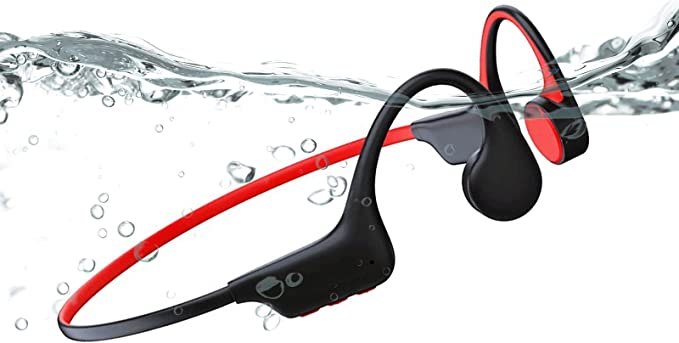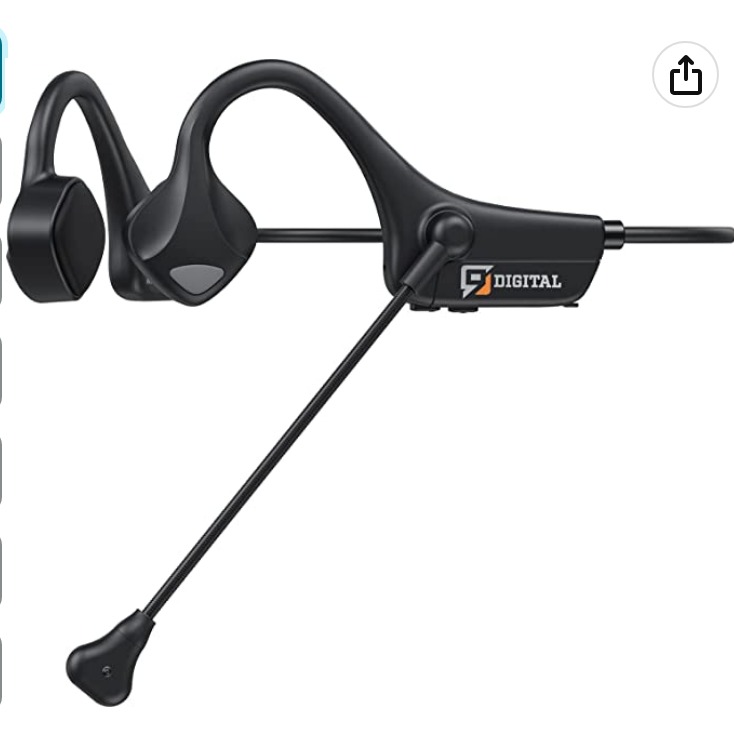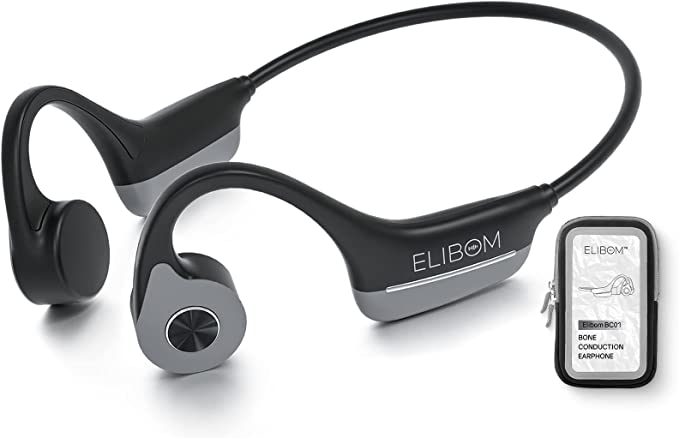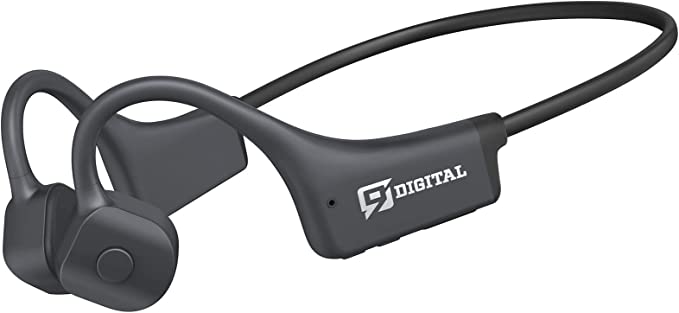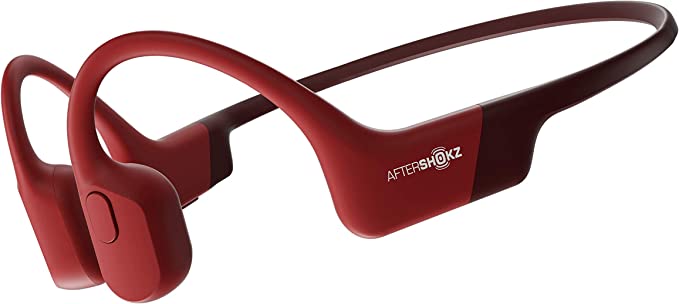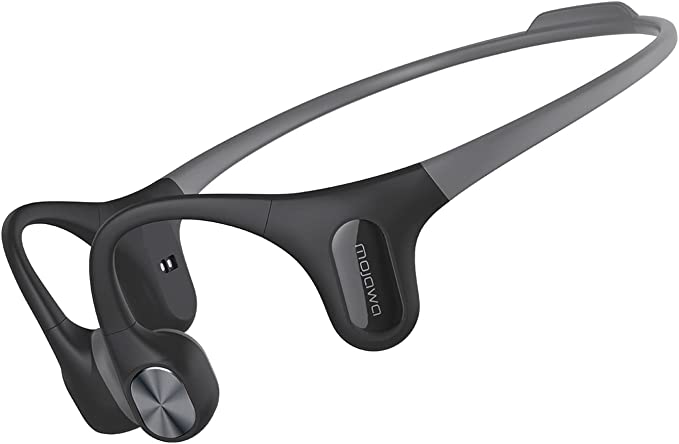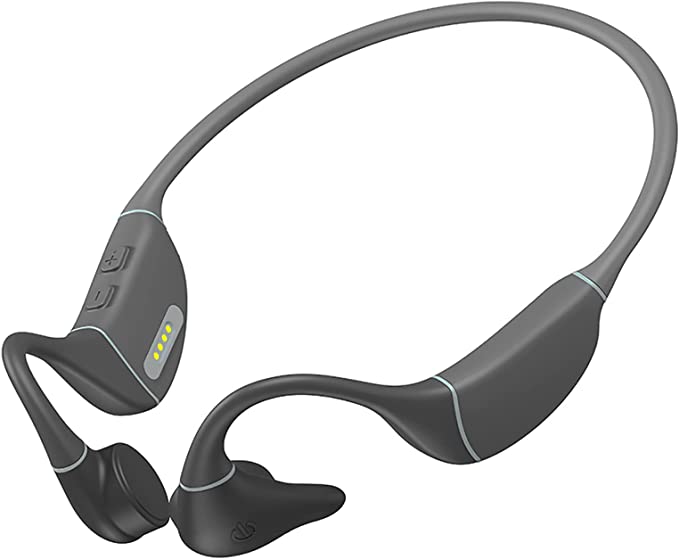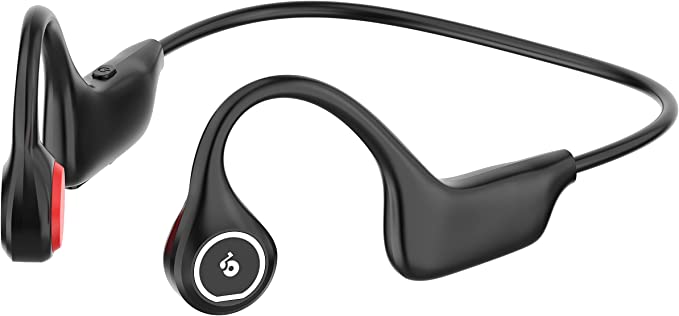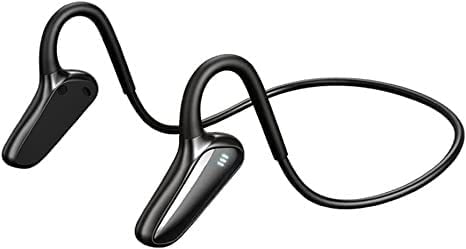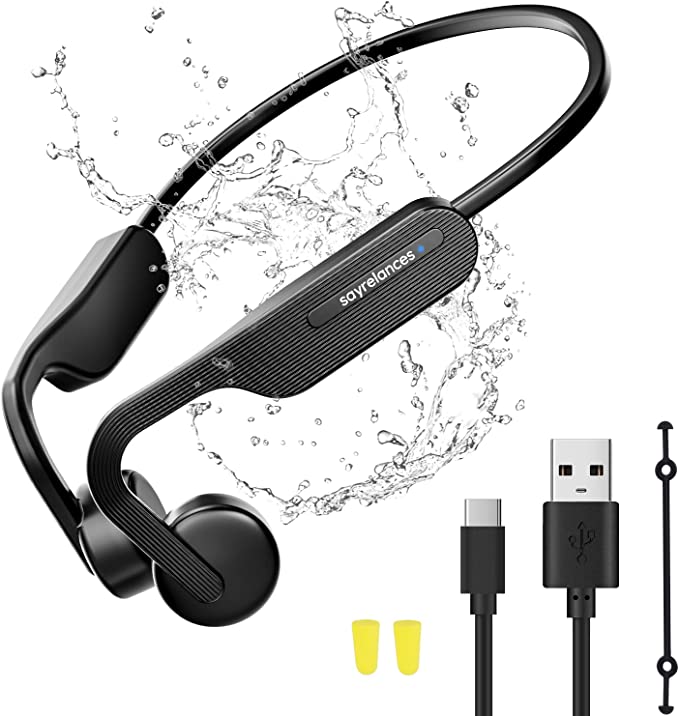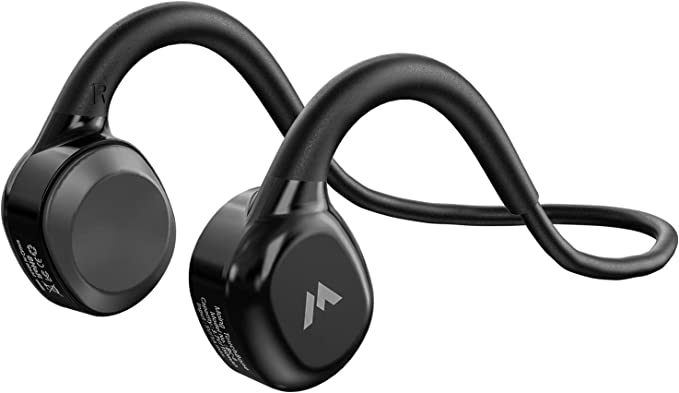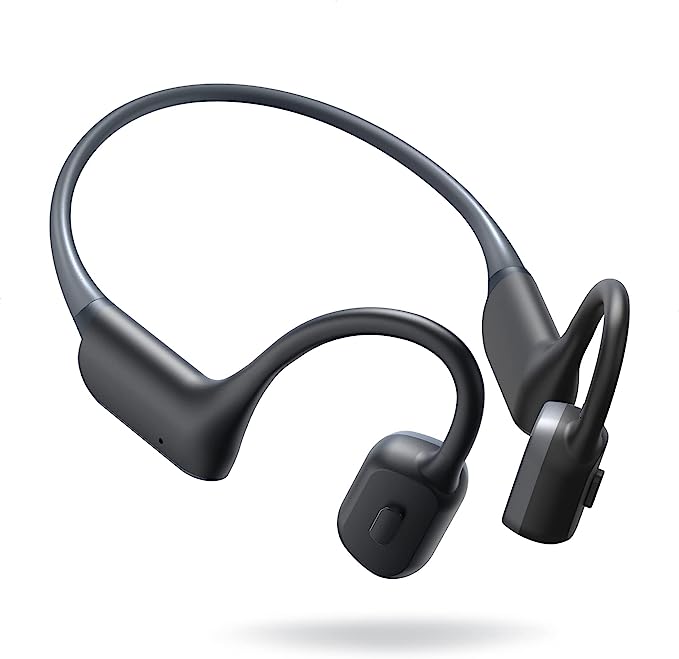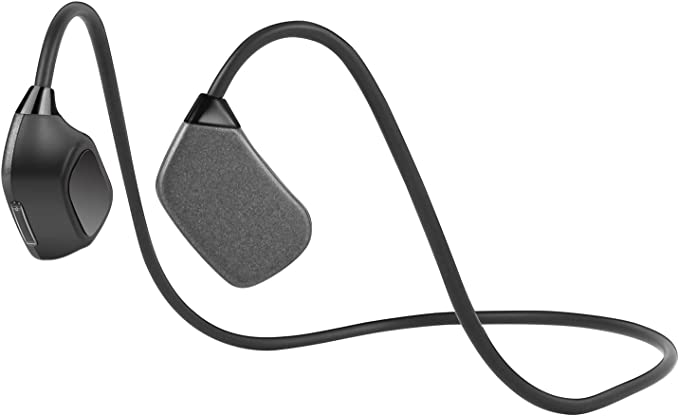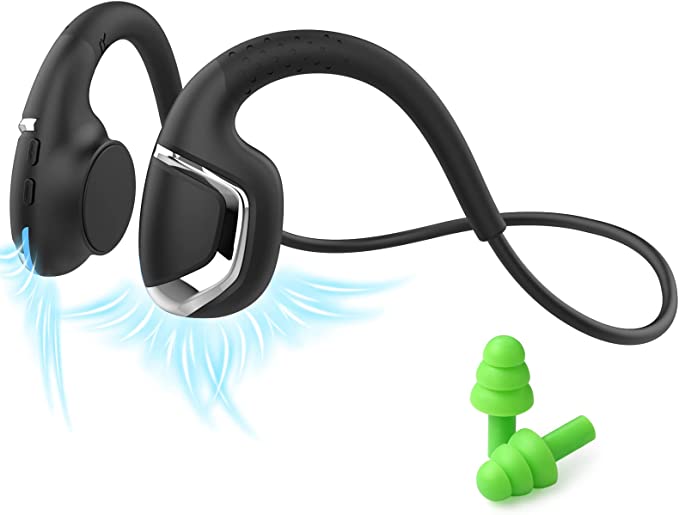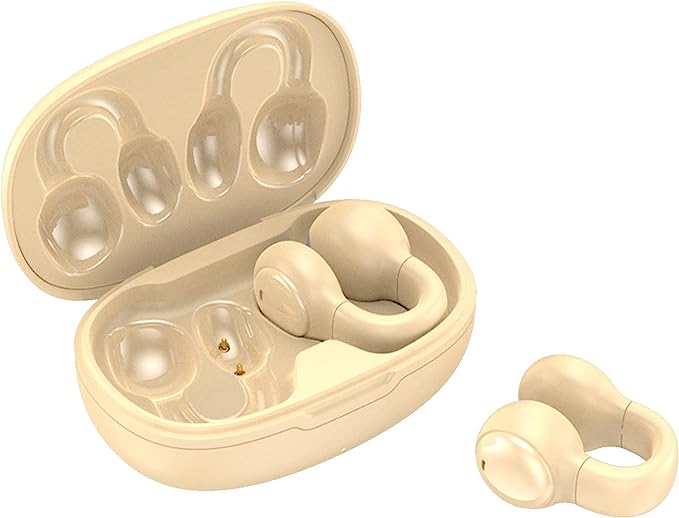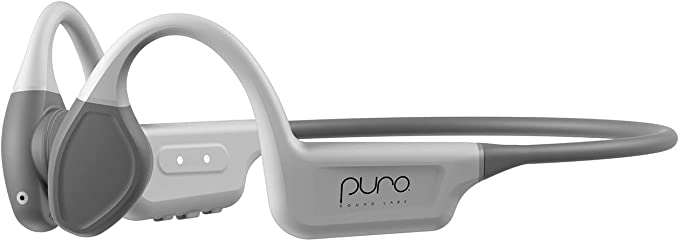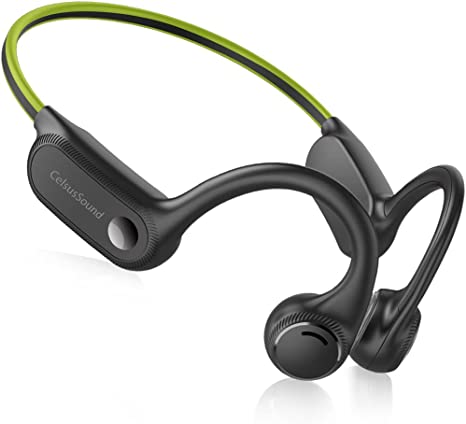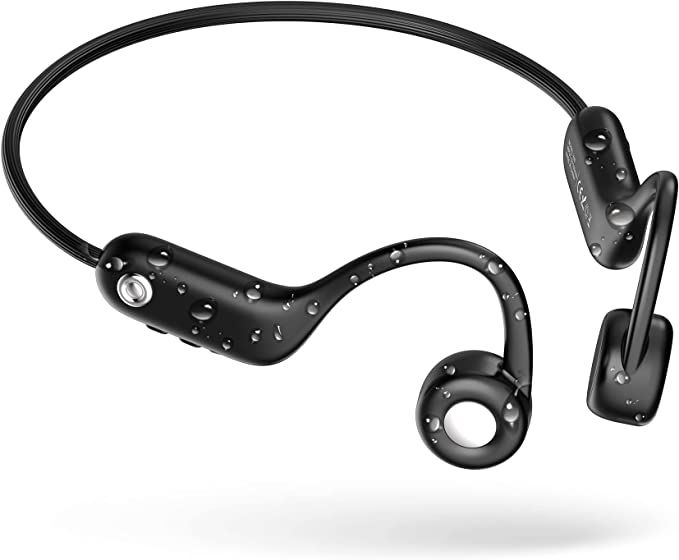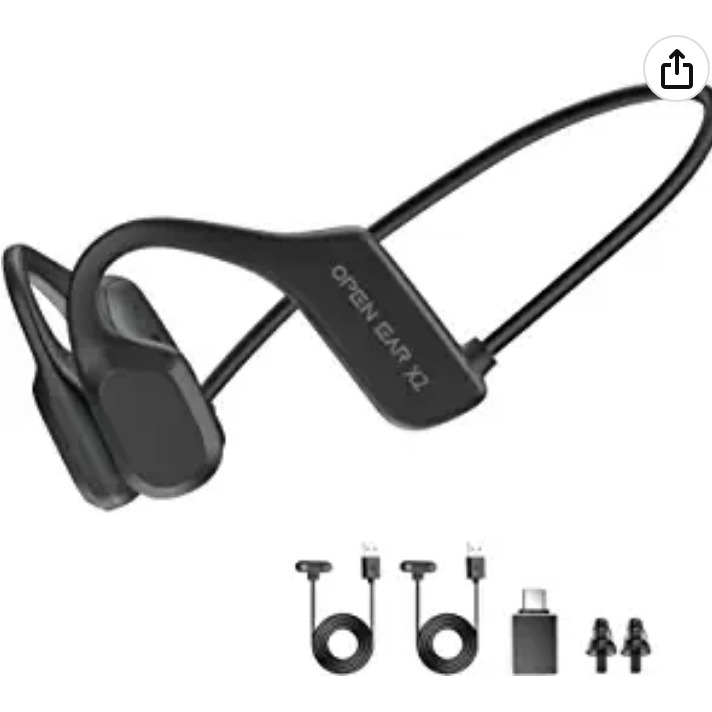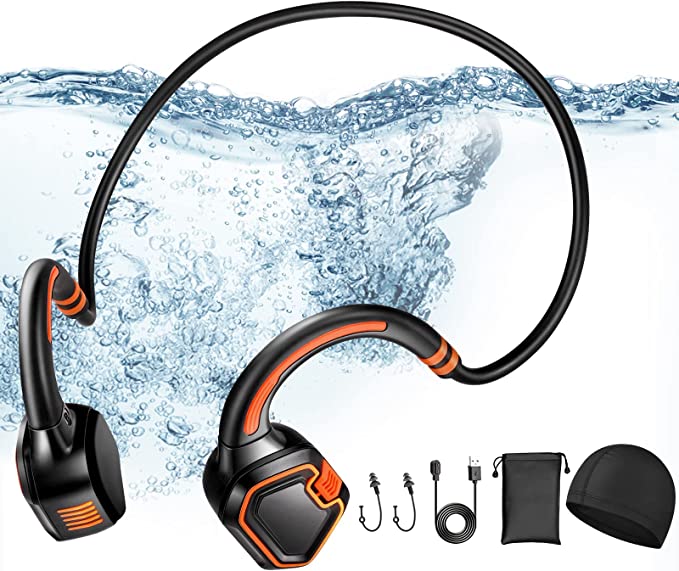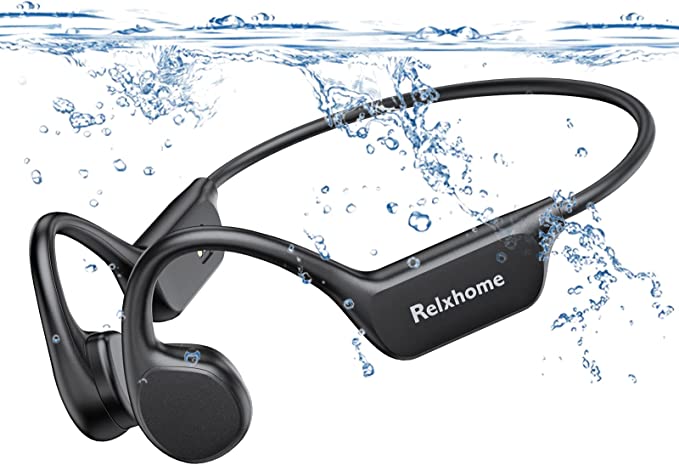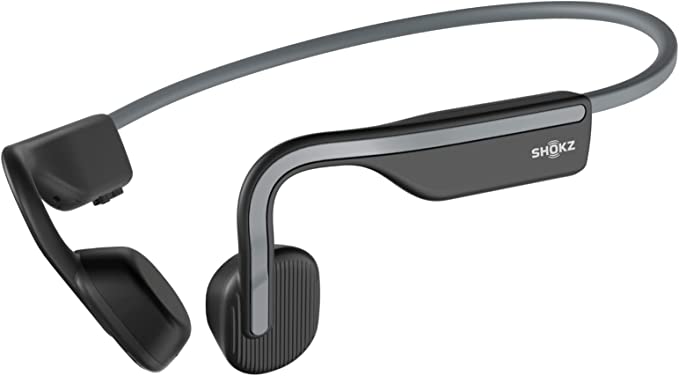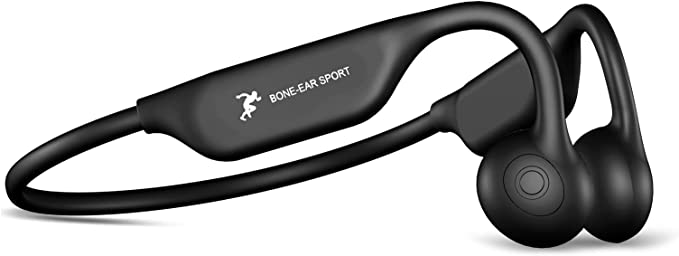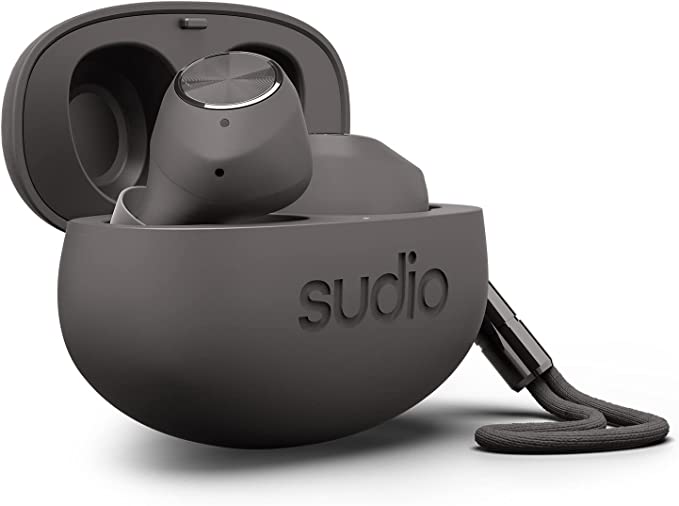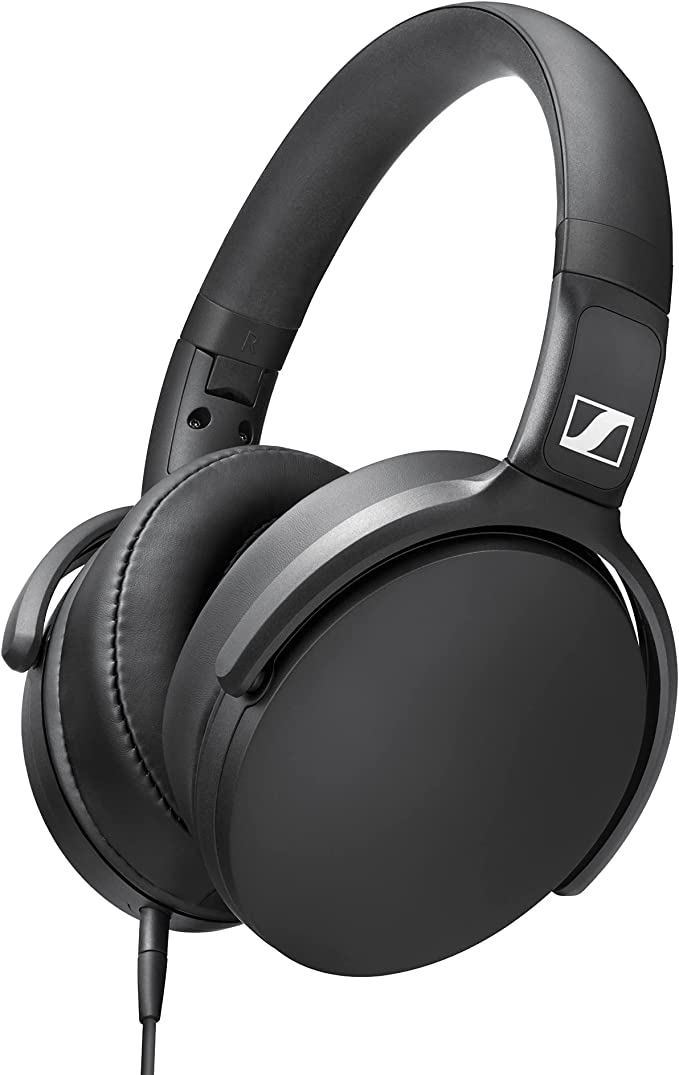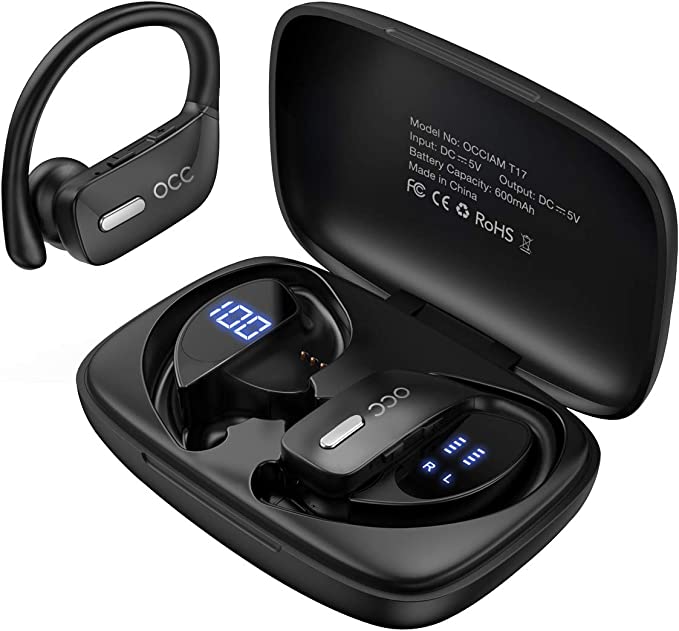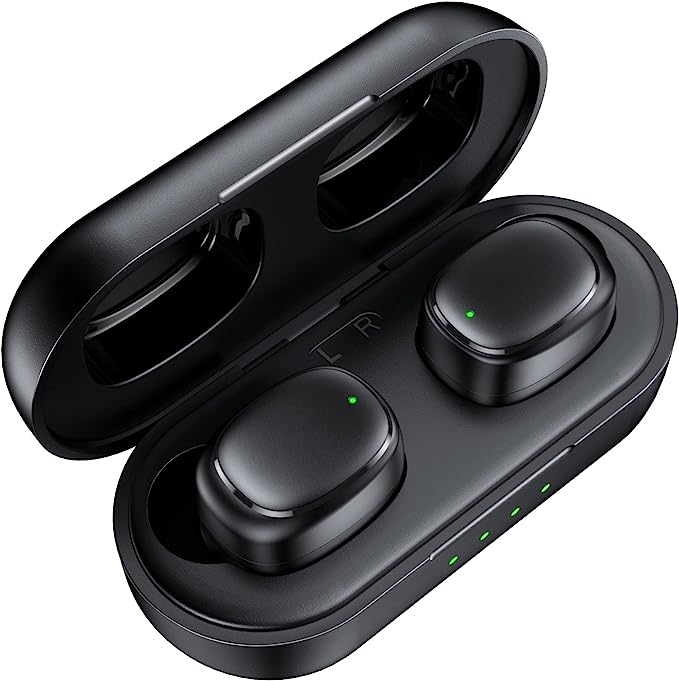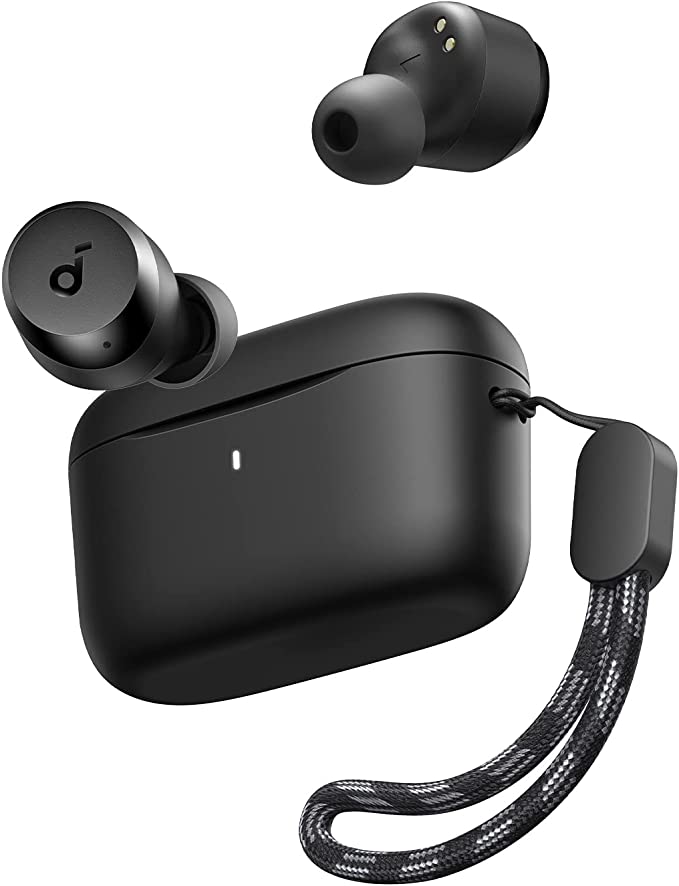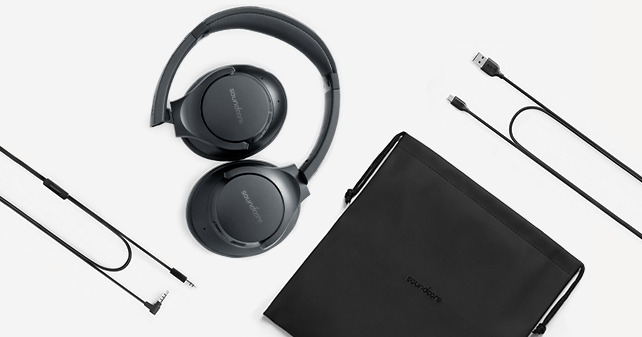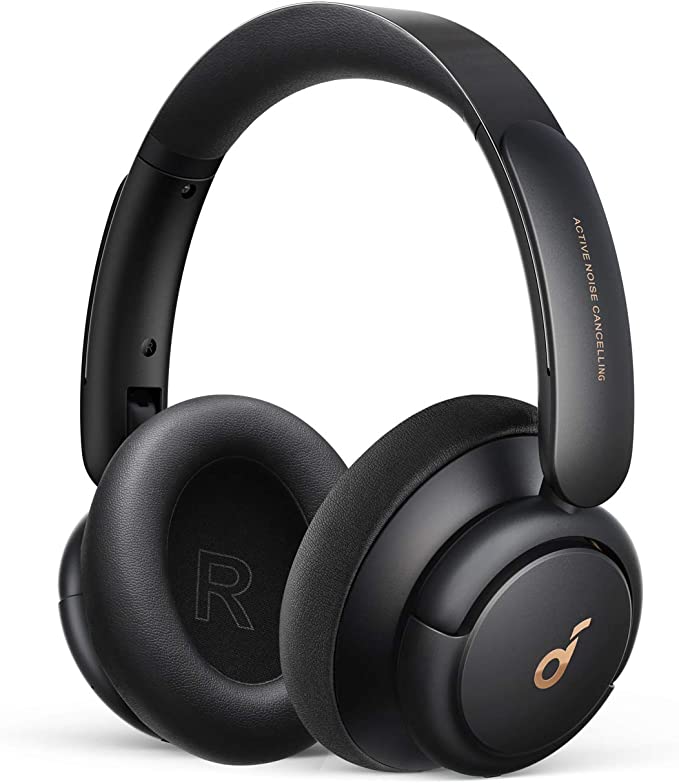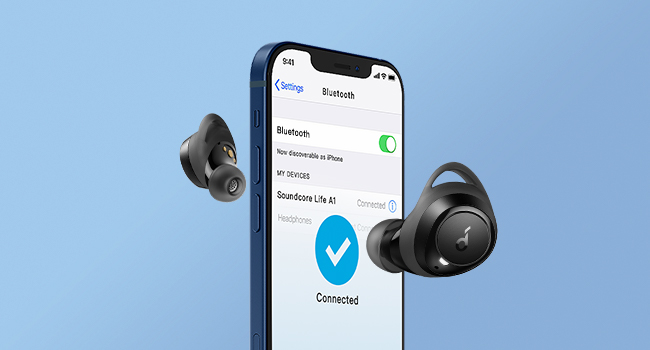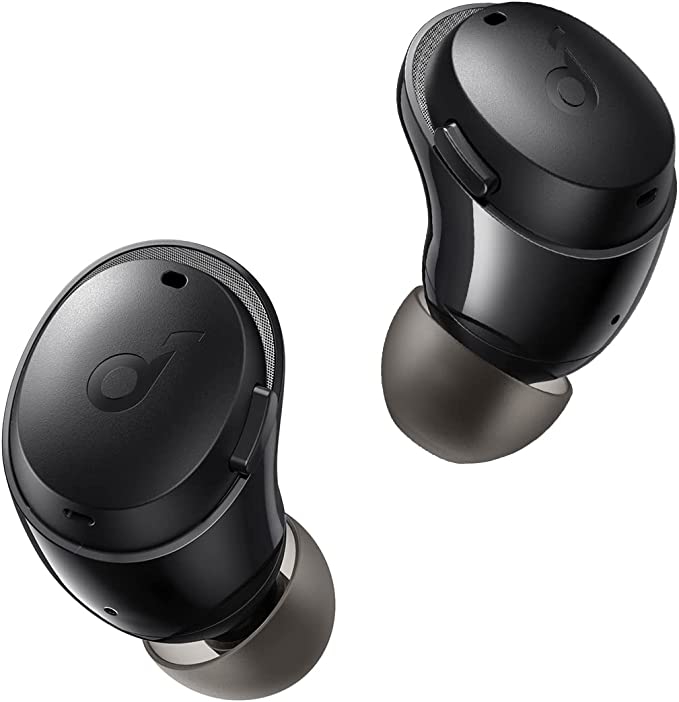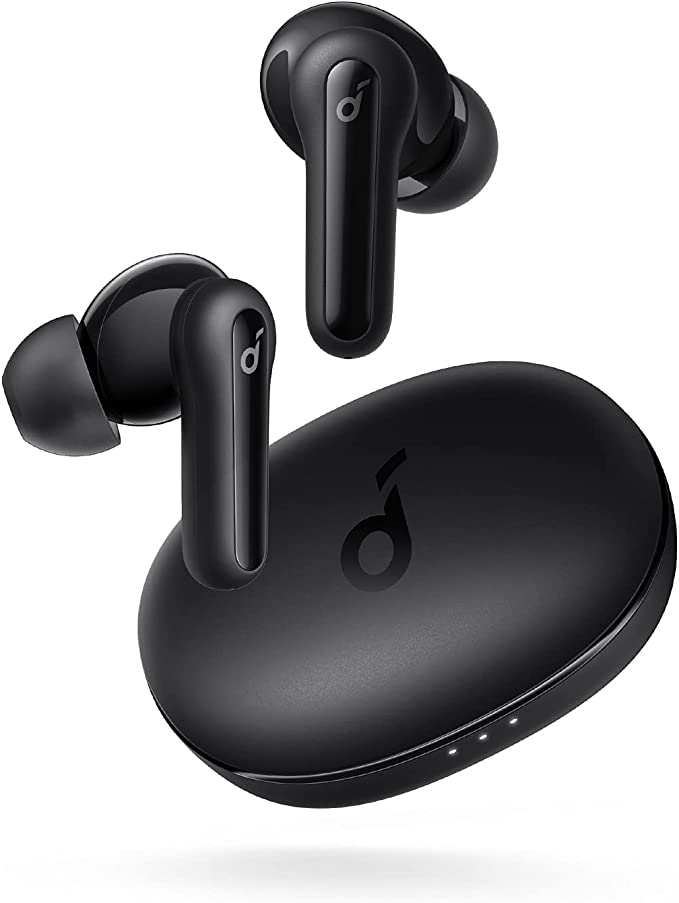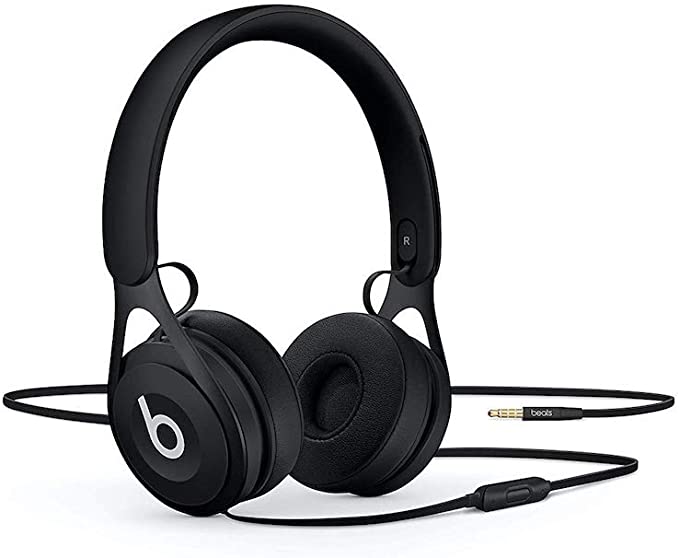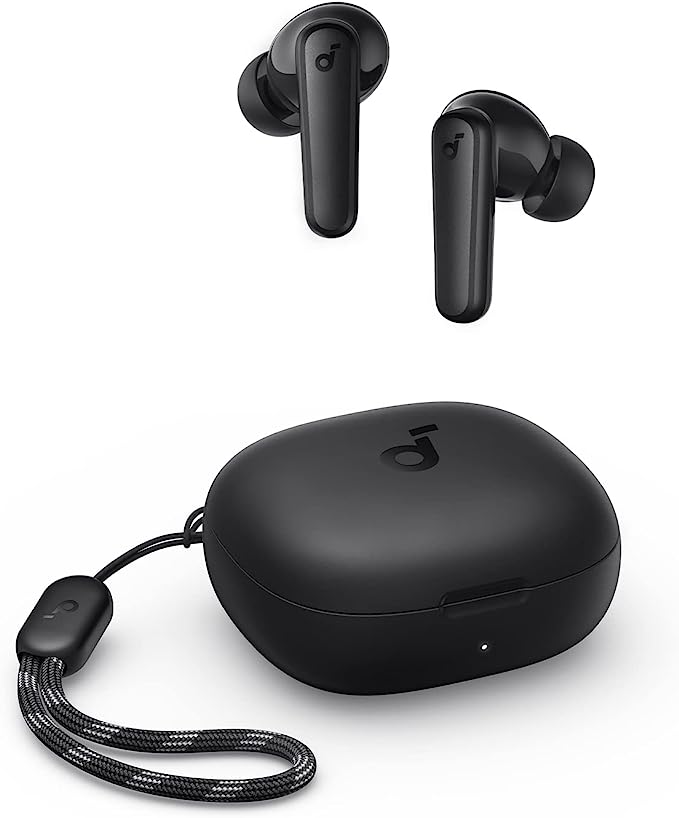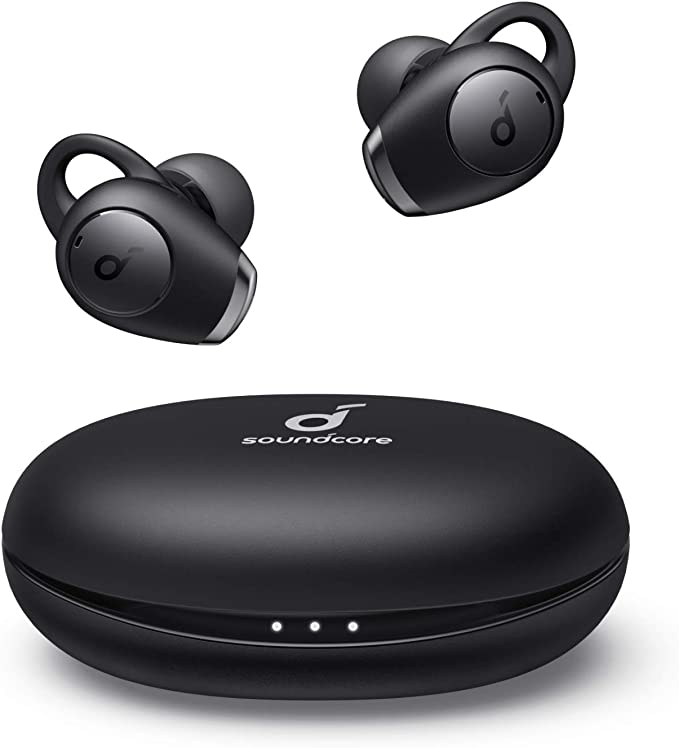ELIBOM BC lite: The Science of Bone Conduction Headphones for Awareness & Audio
Update on May 30, 2025, 3:29 p.m.
We live immersed in a constant ocean of sound, a rich tapestry woven from whispers and roars, melodies and cacophonies. Our ears, intricate marvels of biological engineering, are the primary gateways through which this symphony reaches our consciousness. But what if I told you there’s another, more ancient, and perhaps more intimate way to perceive sound? A pathway that bypasses the conventional route, sending vibrations on a subtle journey directly through the very framework of our being – our bones. This isn’t science fiction; it’s the fascinating reality of bone conduction, a technology that’s not only reshaping how we think about hearing but also how we interact with our auditory world, exemplified in devices like the ELIBOM BC lite bone conduction headphones.

Echoes from the Past, Vibrations of the Present: Unveiling Bone Conduction
The idea that we can hear through more than just our ear canals isn’t a recent revelation. Centuries ago, long before the advent of sophisticated audio devices, individuals with hearing impairments intuitively discovered alternative methods. Perhaps the most cited, albeit anecdotally rich, example is Ludwig van Beethoven. As his hearing tragically waned, the prodigious composer reportedly found he could still perceive the notes of his piano by clenching a rod in his teeth and touching the other end to the instrument. The vibrations traveled through his jawbone to his inner ear, allowing the music to resonate within him, a testament to the body’s remarkable adaptability.
But how does this “internal concert hall” actually work? In conventional hearing, or air conduction, sound waves journey through the air, funneled by our outer ear into the ear canal. They cause the eardrum to vibrate, which in turn sets in motion the three tiny bones of the middle ear – the ossicles. These ossicles act like a sophisticated mechanical amplifier, transmitting the vibrations to the fluid-filled cochlea, the spiral-shaped sanctuary of hearing in our inner ear. Within the cochlea, tiny hair cells dance to the rhythm of these vibrations, converting them into electrical signals that the auditory nerve then ferries to the brain to be interpreted as the sounds we know and love.
Bone conduction offers a clever detour around the outer and middle ear. Instead of sound waves traveling through air, specialized devices called transducers, when placed against certain bones of the skull (typically the cheekbones or temporal bones), generate minute mechanical vibrations. Imagine these vibrations as highly precise, localized tremors. These tremors travel efficiently through the bone, a surprisingly good conductor of sound, directly to the cochlea. The cochlea, impartial to how the vibrations arrive, processes them in the exact same way as it would those delivered via the eardrum. The result? We perceive sound, crisp and clear, as if it originated from within. It’s like feeling the deep thrum of a bass drum resonating in your chest at a live concert, but miniaturized, refined, and delivered with remarkable precision to your auditory nerve center.
It’s crucial to understand that bone conduction isn’t about replacing air conduction; rather, it’s a complementary pathway. We are, in fact, constantly experiencing a subtle blend of both. When we speak, a significant portion of how we hear our own voice is through bone conduction, as the vibrations from our vocal cords travel through our skull to our inner ears. Bone conduction headphones simply leverage this natural phenomenon in a targeted and technologically sophisticated manner.

ELIBOM BC lite: Orchestrating Technology for a New Listening Experience
The ELIBOM BC lite bone conduction headphones aim to be a vessel for this unique auditory experience, thoughtfully designed for individuals who seek to blend their personal soundscape with an undiminished awareness of the world whizzing by. Let’s peel back the layers and explore the science and design philosophy that define its key characteristics.
The Open Stage: The Freedom of Open-Ear Design
Picture this: a cyclist navigating a bustling city street, a runner on a scenic but shared trail, or a parent trying to enjoy a podcast while keeping an ear out for their children. In all these scenarios, traditional headphones, whether they seal the ear canal or cover the entire ear, can create a barrier, a sensory isolation that might compromise safety or a sense of connection. The ELIBOM BC lite, like many bone conduction headsets, champions an open-ear design, and the science behind this is as elegant as it is practical.
By resting the transducers on the cheekbones, just in front of the ears, the ear canals remain completely unobstructed. This is more than just a comfort feature; it’s a fundamental enabler of situational awareness. Ambient sounds – the approaching hum of a car, the friendly greeting of a fellow jogger, the critical instructions from a coach, or the distant cry of a child – can all enter the ear canal naturally, as they always do. Your brain’s remarkable ability for auditory scene analysis, the process of identifying and segregating different sound sources in a complex environment, remains fully engaged. You’re not choosing between your audio and the world; you’re experiencing both, concurrently. This design philosophy recognizes that for many, true listening freedom isn’t just about being untethered by wires, but also about being untethered from sensory deprivation. From a safety perspective, especially in dynamic outdoor environments, this ability to perceive auditory cues can be invaluable.
The Unseen Connection: The Fidelity of Bluetooth 5.3
In our wirelessly interconnected world, the quality of that invisible handshake between our devices is paramount. The ELIBOM BC lite incorporates Bluetooth 5.3, a significant iteration in the evolution of this ubiquitous wireless standard. To appreciate its benefits, think of Bluetooth not just as a “connection,” but as an intricate information highway. Each new version aims to widen the lanes, smooth the tarmac, and improve traffic flow.
Bluetooth 5.3 brings several key enhancements over its predecessors. Firstly, it generally offers improved connection stability and resilience to interference. This means fewer frustrating dropouts or crackles when you’re on the move or in environments със nhiều tín hiệu không dây khác. It achieves this through smarter channel classification and other under-the-hood improvements that help the signal find the clearest path. Secondly, while not always resulting in dramatically increased range in every consumer device (as antenna design also plays a huge role), the underlying standard supports features that can contribute to more robust connections over typical personal-area distances.
Perhaps one of the most user-centric benefits is enhanced power efficiency. Bluetooth 5.3 includes features designed to allow devices to spend more time in low-power sleep states and wake up more quickly and efficiently when needed. For a battery-powered device like a wireless headset, this translates directly to potentially longer playtime between charges and less drain on your paired smartphone. The pairing process itself is also generally quicker and more streamlined. For the ELIBOM BC lite user, this means a more seamless, reliable, and enduring wireless audio experience, letting the technology fade into the background so the sound can take center stage.

The Solo Performance: The Liberation of an Onboard MP3 Player
There are times when even the most beloved smartphone feels like an encumbrance. Imagine setting out for a vigorous run, a long bike ride, or a focused gym session where you crave your motivating soundtrack but not the distractions of notifications, the risk of dropping your phone, or the sheer bulk of carrying an extra device. The ELIBOM BC lite addresses this desire for audio autonomy with its integrated MP3 player, reportedly expandable up to a substantial 128GB.
This feature transforms the headphones from a mere peripheral into a standalone music system. The science here is rooted in the marvel of flash memory, the same technology that powers USB drives and the storage in our phones. Tiny transistors store digital audio files (like MP3s, which themselves are a clever application of psychoacoustics to compress music data efficiently) in a non-volatile way. By integrating this capability directly into the headset, ELIBOM offers a path to a truly phone-free listening experience.
The value is multifaceted. For athletes, it means less gear to manage and a reduced risk of damaging a more expensive smartphone. For those seeking a “digital detox” but still wanting their tunes, it’s a perfect solution. It also means your music isn’t dependent on your phone’s battery life or a cellular data connection, which is ideal for off-grid adventures or simply conserving phone power. It’s a nod to the era of dedicated music players like the Walkman or iPod, but with the modern convenience of integration into a multi-functional headset – a pocket-sized concert hall, just for you, anytime, anywhere.

The Featherlight Touch: The Ergonomics of “Lite” Design
The “lite” in ELIBOM BC lite isn’t just a name; it’s a statement about its design intent. For any wearable technology, particularly one intended for active use or extended wear, ergonomics and weight are not just afterthoughts – they are critical to the user experience. Even a few extra grams, if poorly distributed, can lead to pressure points, discomfort, and fatigue over time.
The science of ergonomics, in this context, involves understanding how the device interacts with the human body. A lightweight design for bone conduction headphones means carefully selecting materials – perhaps durable yet light polymers or specific metal alloys (though the exact materials for the BC lite are not detailed in the provided information) – that offer structural integrity without excessive mass. Beyond just the total weight, the distribution of that weight is key. The aim is to balance the headset securely on the cheekbones and around the ears in a way that minimizes pressure on any single point. The band connecting the two sides must provide enough clamping force to keep the transducers in optimal contact with the bone for good sound transmission, yet be gentle enough to avoid causing a headache. This balancing act ensures that the headphones feel like a natural extension of the wearer, allowing them to focus on their activity or their audio, rather than the sensation of the gear itself. The goal is a “barely-there” feel, crucial for those long runs, extended work sessions, or all-day listening.
The Voice in the Noise: A Note on the Microphone
While the provided information simply states the ELIBOM BC lite includes a microphone, its presence is a key functional component for any modern headset. In a wireless, open-ear design intended for active users, a microphone facilitates hands-free calls or voice assistant interaction. The scientific challenge for microphones in such headsets often involves isolating the user’s voice from ambient noise (like wind or traffic) and from any sound leakage or vibration from the headphones themselves. Though specifics on noise-canceling technology for the BC lite’s microphone aren’t available, users would typically expect a certain baseline of clarity for communication, allowing them to seamlessly switch between listening and speaking without reaching for their phone.
The Wider Resonance: The World of Bone Conduction Audio
Bone conduction technology, as harnessed in devices like the ELIBOM BC lite, carves out a unique niche in the vast landscape of personal audio, offering distinct advantages while also presenting its own set of characteristics.

When Bone Conduction Shines: Ideal Scenarios
The most lauded benefit, and rightly so, is enhanced situational awareness. This makes bone conduction headphones a compelling choice for outdoor athletes like runners and cyclists who must remain acutely aware of traffic and their surroundings. It’s also beneficial for hikers, skiers, or anyone engaging in activities where hearing environmental cues is vital for safety. Beyond sports, consider construction workers, warehouse staff, or even parents who need to monitor their environment while still accessing audio information or entertainment.
Another advantage is comfort for certain users. Some individuals find in-ear earbuds irritating or uncomfortable over long periods, or they dislike the occluded feeling they create. Over-ear headphones can be bulky or cause ears to get warm. The open-ear nature of bone conduction can offer a welcome alternative, free from pressure inside or directly on the ear.
Furthermore, for individuals with specific types of conductive hearing loss – where the outer or middle ear’s ability to transmit sound is impaired, but the inner ear (cochlea) is healthy – bone conduction can be a revelation. By bypassing the damaged or problematic outer/middle ear structures, it can deliver sound directly to the functional inner ear, offering a viable pathway to hearing. It’s important to state, however, that bone conduction headphones are consumer electronic devices, not medical hearing aids, and anyone with hearing concerns should consult an audiologist.
An Honest Conversation: Navigating the Nuances
Like any technology, bone conduction has its characteristic trade-offs when compared to traditional air conduction headphones. It’s important to have an informed perspective.
A common point of discussion is bass response. Because bone conduction doesn’t create a sealed acoustic chamber within the ear canal like in-ear monitors, or move large volumes of air like big over-ear headphones, the perception of deep, thumping bass can sometimes feel less impactful. The physics of transmitting low-frequency vibrations efficiently through bone directly to the cochlea are complex, and while designs are constantly improving, users accustomed to bass-heavy traditional headphones might notice a difference.
Another characteristic is the sensation of vibration, particularly at higher volumes. Since sound is being delivered via mechanical vibrations, a slight tingling or buzzing sensation on the cheekbones can sometimes be felt. Most users adapt quickly, and well-designed transducers aim to optimize sound delivery while minimizing extraneous tactile sensations, but it’s a unique aspect of the experience.
Sound leakage, where people nearby might faintly hear what you’re listening to, can also be a factor, especially at higher volumes in quiet environments. Again, manufacturers employ various acoustic and mechanical design strategies to contain the sound as much as possible, but the open nature of the system means it’s inherently different from a closed-back, sealed headphone. The provided information on the ELIBOM BC lite suggests this is “generally minimal in well-designed models.”
The Horizon of Hearing: What’s Next for Bone Conduction?
The journey of bone conduction technology is far from over. Innovation continues at a brisk pace. Researchers and engineers are constantly exploring ways to: * Enhance audio fidelity: This includes striving for a fuller frequency response, particularly improving the richness and depth of lower frequencies. * Minimize sound leakage and unwanted vibrations: Refining transducer design, dampening materials, and acoustic shaping are ongoing areas of development. * Improve efficiency and miniaturization: Making transducers smaller, lighter, and more power-efficient opens doors for even sleeker designs and longer battery life. * Integrate with other technologies: We’re already seeing bone conduction being explored or implemented in smart glasses, augmented reality headsets, and specialized communication systems for various professions (e.g., first responders, military personnel) where unobstructed hearing and clear communication are critical. The potential for discreet, all-day wearable audio interfaces is significant.
As materials science, signal processing, and transducer technology advance, we can expect future bone conduction devices to offer an even more compelling and refined auditory experience.
Listening Anew: Embracing the Soundscape with ELIBOM BC lite
The ELIBOM BC lite Bone Conduction Headphones, based on the features described, aim to be more than just a way to listen to music; they represent an invitation to experience your audio and your world in a new, harmonious way. By leveraging the elegant science of bone conduction, they champion a philosophy of open-ear listening that prioritizes awareness, safety, and comfort, particularly for those with active lifestyles or anyone who prefers to remain audibly connected to their surroundings.
The integration of Bluetooth 5.3 promises a stable wireless link, while the onboard MP3 player offers a liberating, phone-free option. The lightweight design speaks to a commitment to user comfort during extended use. While, like all technologies, bone conduction has its unique sonic signature and considerations, its strengths in specific contexts are undeniable.
It’s important for potential users to remember that, according to the information provided, the ELIBOM BC lite is currently unavailable. Those intrigued by its promise should monitor the ELIBOM store for any updates regarding its availability.
Ultimately, understanding the diverse ways we can perceive sound, and the technologies that enable these experiences, enriches our relationship with both our auditory environment and the innovations that shape our lives. Bone conduction offers a compelling glimpse into a future where personal audio is seamlessly woven into the fabric of our daily awareness, allowing us to listen deeply, both to our chosen content and to the vibrant, ever-unfolding symphony of the world around us.
